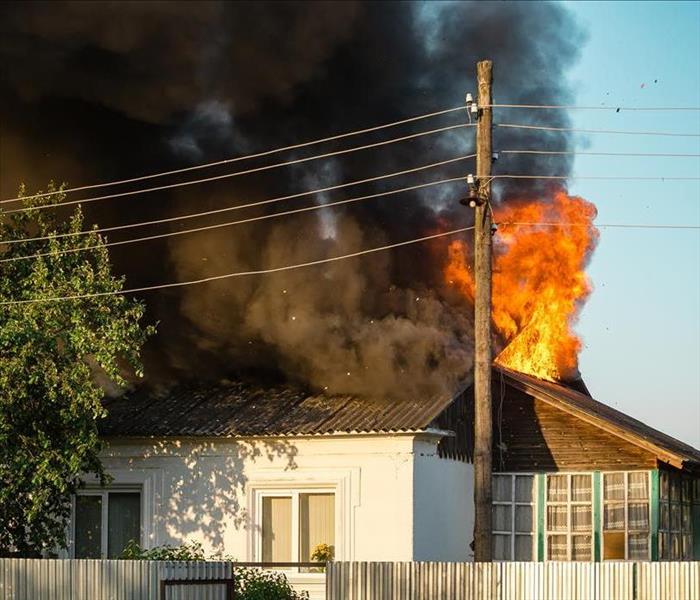Understanding the Fire Cleanup Process
8/20/2021 (Permalink)
Most homeowners worry about the fire and smoke damage after a fire, but there are more issues to deal with than that. Most fires will leave behind a trail of debris and water damage in their wake. If you experienced a fire, contact a fire remediation specialist in Ogden, UT, for assistance. They will institute a multi-step plan for recovery, including:
- Water removal
- Debris cleanup
- Smoke and soot cleanup
- Restoration
Water Excavation
The first thing a remediation crew will need to tackle is any excess water in the home. Between the fire hoses and burst or broken pipes, a fire can leave behind a substantial amount of water.
The crew you hire will likely come prepared with shop vacs, pumps, and possibly van pumps. These tools should make quick work of the water.
With the water removed, the crew will need to dry the area before they begin cleanup and restoration. Again, they will have several tools for the job: dehumidifiers, fans, and air movers.
Trash and Debris Removal
When the area is dry, the crew you hire can begin removing all the debris and assess the house's structure. Sometimes, the level of damage does not become apparent until after water and garbage are removed.
Most items touched by the fire will need to be thrown away, especially porous items present in a chemical fire. However, you might be able to salvage non-porous or hard surfaces, as these can be cleaned easily of any residue.
Smoke and Soot Cleanup
The most challenging aspect of fire cleanup is smoke damage. Smoke and soot get into and contaminate everything. Even when a fire is small, the smoke and soot can contaminate multiple floors of a home because of HVAC systems connecting different levels of the house.
A mitigation crew will need to examine all appliances, devices, and surfaces to eliminate any trace of soot damage. If any amount of soot remains in devices and appliances, it can damage or contaminate the outputs.
In many situations, experts recommend discarding any equipment present in a fire because of the challenge of cleaning the items. If you choose to keep as much equipment as possible, you might want to hire a cleaning specialist.
Restoration
The final fire and smoke cleaning stage is the part of the process that all homeowners look forward to the most: restoration. During this phase of construction, the home's structural integrity is re-established, drywall is replaced, flooring is restored, and painting and other finishing touches commence. When all is said and done, the homeowner will never know that anything bad happened to their home, at least not by looking at it.
While smoke damage is a concern for many homeowners after a fire disaster, the primary concern should be the house's structural integrity. A fire is not an automatic loss for the structure of the house. In fact, there are many situations when mitigation and restoration services can rectify the beauty and soundness of a fire-ravaged home. The point is, allow experts the opportunity to assess your home because it might not be as bad as it seems.




 24/7 Emergency Service
24/7 Emergency Service
